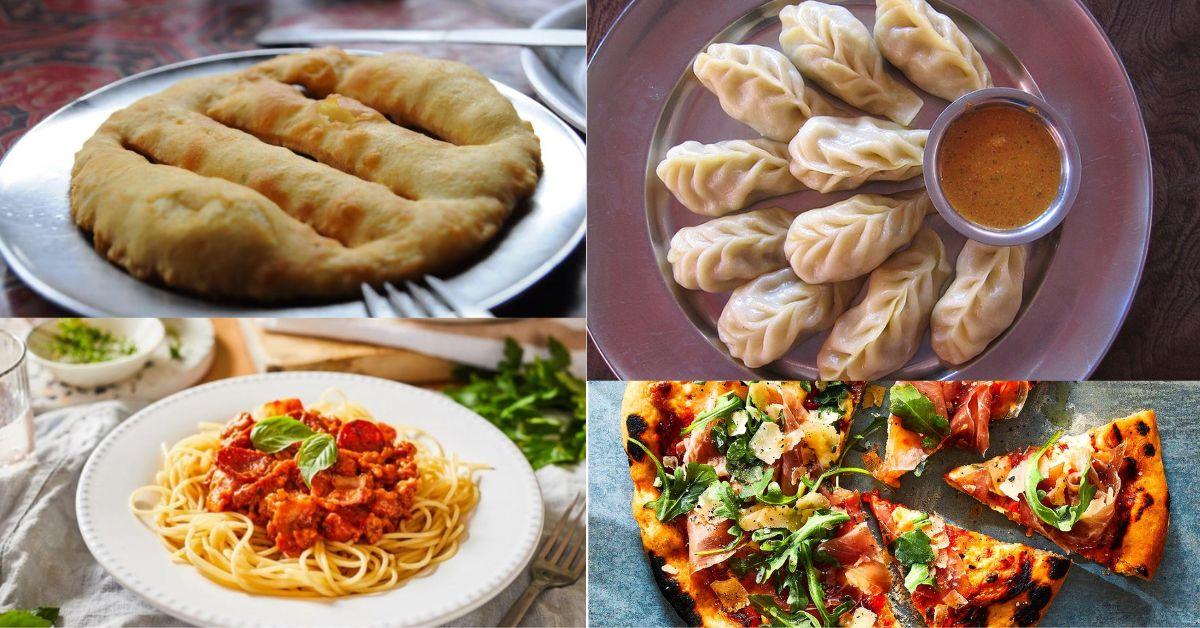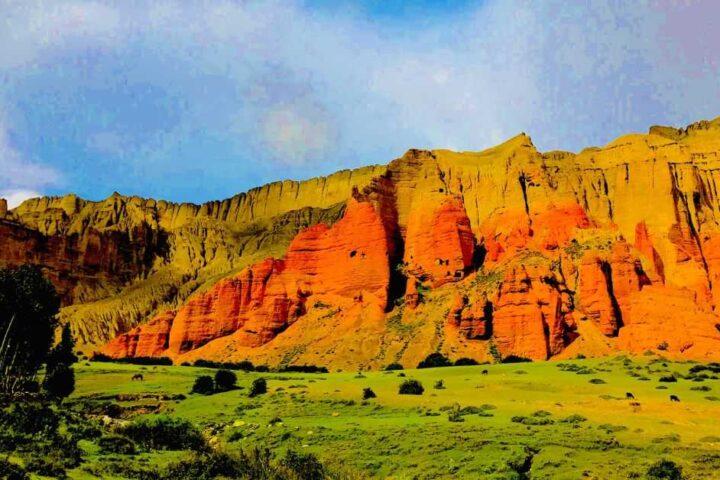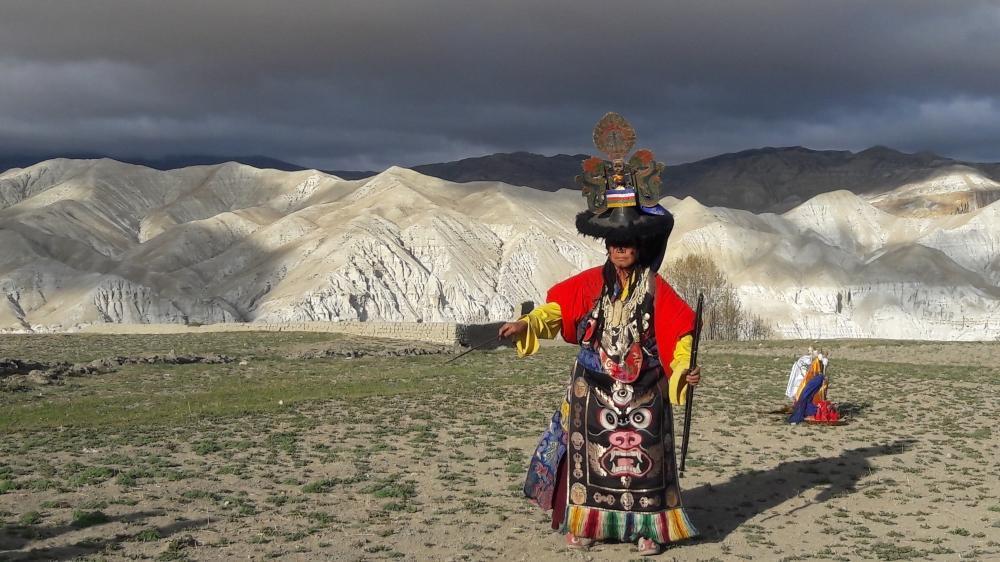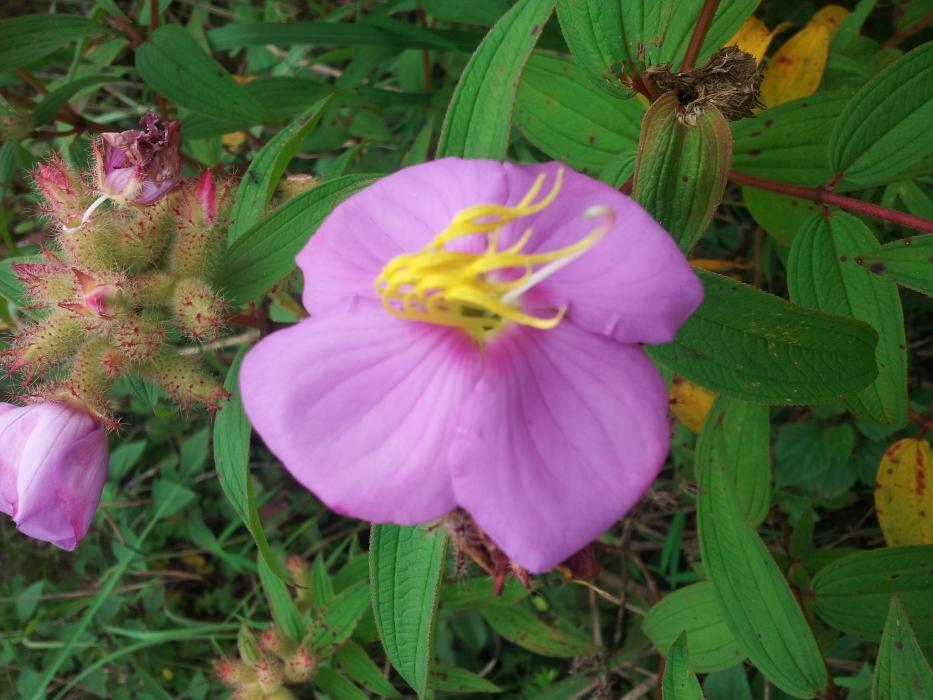The Mustang Tiji Festival is an annual Buddhist festival that is celebrated for three days at the beginning of every harvest season in the Upper Mustang. The Tiji word came from the Tibetan word Ten Che and it means “The hopes of Buddhism prevailing in the world for love and consensus.” The theme of the celebration is the victory of God over the demons.
As the legend relates to the Tiji festival, A brave boy called Dorje Jono (Lord Buddha’s incarnation)fights to oppose his demonic father called (Mha Tam Rhu). His father (Mha Tam Rhu) created devastation in the Upper Mustang by creating storms and a shortage of water. In the end, Dorje Jono wins the fight against his father and chases his father away from the Mustang region. Since then this carnival celebrates in the Kingdom of Lho Lomanthang Upper Mustang.
Upcoming Date of 2024 Upper Mustang Tiji Festival Event in Lomanthang.
- 2024 Tiji Festival Date – May 5th, 6th, and 7th
- 2025 Tiji Festival Date – May 24th, 25th, and 26th
Tiji festival is celebrated for 3 days in the kingdom of the Lho, Upper Mustang Lomanthang. Each day the monks will perform various dance forms. With a strong belief in tracking down the devil away from the region. All these dance forms represent different aspects of the celebration and it’s very significant to do accordingly. Otherwise, they believe that this region has to face a catastrophe in that year.
Usually, the Tiji Festival in Upper Mustang is celebrated during the summer season between May and June. So the Upper Mustang Tiji Festival Trip is one of the best summer treks in Nepal. The summer season is not a good time to do other trekking such as Everest Base Camp, Annapurna Base Camp, Langtang Valley, etc. Do you want to see the Upper Mustang Tiji Festival Photos before you plan to visit the Mustang for the Tiji Festival?
Day-by-day performance of the Mustang Tiji Festival

Day one of the Tiji Festival
On the first day of the Mustang Tiji Festival Trek, will observe a dance performance and opening ceremony of the Tiji Festival that is called Tsa Chham. The opening ceremony begins with the praying at the Chhode Monastery. Afterward, all the monks gather together with their ceremonial equipment to start the festival. Then a huge Thanka (Painting) will roll down on the wall of King Palace Square. After all, these ceremony all the monk performs their various traditional dance form according to the legend of the Tiji Festival.
The day second of the Tiji Festival
Like, on the first day, on the second day of the Tiji Festival, the Lama performs another traditional dance form called Nga Chham. It is all about the birth of Dorje Jonu (The protector of Mustang) and the son of the demon who wants to destroy the Mustang. On the second day, local people will gather in their traditional outfits, and even the King of the Mustang and other VIP persons will gather in their traditional attire. This will add extra beauty to the Mustang Tiji Festival celebration.
The third day of the Tiji Festival
The third and final day of the Tiji Festival will commence with Monks dance performance and it is all about the destruction of the demons. And reinstating the region to the Lord Buddha from the devil’s hand. Monks will prepare a dummy devil to destroy and the monks will take that dummy to destroy in an open area and it will destroy fire. During this final ceremony, so many people from the whole Mustang region, including the Mustang’s VIPs will participate to see that last day’s performance.
Require permits for the Tiji Festival Trek to Lomanthang.

The Upper Mustang area is one of the restricted trekking areas of Nepal. And Tiji festival will be celebrated in Upper Mustang; therefore it requires a special and normal ACAP (Annapurna Conservation Area Permit) Permit. To grant permission to observe the Tiji Festival in Lomanthang.
The special permit will cost per person USD 500 and it’s just for 10 days only. After 10 days there will be an extra USD 50 per day per person. On the other hand, a normal Annapurna Conservation Area Permit will cost USD 30 for unlimited days. But you need to mention how many days and which trek you want to do.
To issue a special trekking permit requires a minimum of two persons. This special permit is only issued by registered trekking companies. And a license-holder trekking guide is mandatory. So you have to issue the Mustang Tiji Festival Trek permit from a company as it is not possible for an individual.
To obtain the Upper Mustang region trekking permit, an original passport is essential. With the details of the Nepal visa such as the visa issue date, arrival date, and expiration date. The permit has to be applied online.
2024 Tiji Festival Trek Itinerary
The Mustang Tiji Festival Trek Itinerary is different from different trekking agencies and types of treks you are doing. Some companies offer trekking up to Lomanthang and drive down from there. Due to the road, some trekking and tour companies are offering Jeep or Bike tours to explore the event. Therefore there is no fixed itineraries are available.
If you know the Tinji Festival Date when it is going to be celebrated, You can plan according to your time. Here is the normal Tiji Festival Trek Itinerary for 2024. Here also not added your travel days to Kathmandu and Pokhara. So you need to have extra days as well. But you have to pay an extra 50 USD per day per person to extend the permit.
| May 1, 2024 | Day 1 | Fly to Jomsom and trek to Kagbeni (2810M) |
| May 2, 2024 | Day 2 | Kagbeni to Chaile (3050M) |
| May 3, 2024 | Day 3 | Chaile to Syangbochen (3850M) |
| May 4, 2024 | Day 4 | Syangbochen to Tsarang (3560M) |
| May 5, 2024 | Day 5 | Tsarang to Lomanthang (3810M) and observe day 1 of the Tiji Festival |
| May 6, 2024 | Day 6 | Observe the second day of the Tiji Festival |
| May 7, 2024 | Day 7 | Observe the third day of the Tiji Festival |
| May 8, 2024 | Day 9 | Lomanthang to Dhakmar (3820M) |
| May 9, 2024 | Day 10 | Dhakmar to Syangbochen |
| May 10, 2024 | Day 11 | Samar to Chhusang (2980M)via Chunsi Cave |
| May 11, 2024 | Day 12 | Chhusang to Jomsom (2720M) |
| May 12, 2024 | Day 13 | Fly or Drive back to Pokhara (850M) |
Date and Itinerary of the Tiji Festival 2024, This Itinerary can be changed to your time and wishes. Because there is a lot to explore and visit you can add places like Yara, Ghara, and Tangbe also if you like trekking.
Food and drinking water during the Tiji Festival Trek

Culturally rich this Mustang region has its unique foods and beverages that are available. Due to commercialization, there are available of Western, American, Chinese, and Indian menus in every hotel and guest house. So that as trekkers you can test the local food as well as your types of cousins. So regarding food while you are doing Tiji Festival Trek no need to worry.
Naturally beautiful this area has many streams, waterfalls, rivers, and sources of water. International travelers should drink purified water from the water sources of Mustang. To do that you need to bring water purifying tablets or other water purifying tools. Also, there is available purifying mineral water in a plastic bottle in every guest house and shop.
Activities to do while staying in Lomanthang 3 days for the Tiji Festival

The Lomanthang used to be the kingdom of the Upper Mustang and while staying there you can do a lot of things. From here you can explore many places inside the village outside of the village as well. As you are going to spend three nights here during the Tiji Festival I suggest exploring more beautiful places nearby. These are the 4 most important activities you can do alongside enjoying the vibrant Tenji Festival celebrations.
1: Explore the ancient monasteries.
Inside the Lomanthang there are three major ancient, historical, and religious monasteries located. Visiting those aged Buddhist Shirin will give you the value and importance of the Buddhist religion in Mustang. Also, these monasteries are proof of the history of the Upper Mustang. However, nowadays renovations are going on in those monasteries.
The first one is the Chode Gompa also called the Dragkar Thegchen Ling Gompa and this is the one where you have to buy an entry ticket to the monasteries. The second one to visit is the Jampa Monastery and the third one is the Thupchen Monastery. It’s believed that these monasteries were built between the 13th to 14th centuries.
Do not forget to visit the Gumpa Museum to understand more about Mustang and Mustangi people.
2: Visit Chhoser Village and the China border.
Most of the trekkers who do the Upper Mustang Trek will visit the Chhoser Village. In the Chooser village, there are many fascinating things to see such as ancient caves, stupas, cave monasteries, and the daily lifestyle of the local people.
Generally, trekkers don’t go to the China border but I recommend you to visit there too. Because you can see the reality between the Nepal and China border. Normally, the Tiji festival celebration will take part after lunch so that before lunch you can visit these places. Take a Jeep or horse riding are the suitable options.
3: Buy souvenirs for your friends and family at Lomanthang.
The celebration doesn’t start from quite early in the morning. While you waiting to participate in the Tiji festival each day and have nothing to do then you can go shopping there. Every Hotel and Guesthouse has a souvenir shop and outside in the streets also tourist shops. They all will sell special Mustang items for tourists as souvenirs. Such as bracelets, necklaces, and other jewelry items for men and women.
Thank is a Buddhist symbolic painting it comes with various types of paintings. These Thankas are mostly dedicated to various Buddhist gods and goddesses. So buying a Thank painting while enjoying the festival and traveling in Nepal is better than buying in Kathmandu and Pokhara.
Tibetan costumes and ornaments are also available in the Lomanthang. It says that those clothes and ornaments are pure and original. The markets like Kathmandu and Pokhara have copied ones and modern style.
4: Walk around the village talk with locals and drink coffee
Lomanthang is quite an impressive and typical walled village. Most of the residents are inside the wall so walking inside the village stands an opportunity to observe the lifestyle of the local people. Nowadays there are houses on the outside of the wall as well. It is because of the growing population of the village.
While walking you can talk with the people sitting near the Royal Palace and understand their culture and tradition. And taking some good-quality portrait photos of the local people. Look and ask for permission before clicking the photos. Because some people don’t like to take their photographs.
Upper Mustang is not any more remote area of Nepal. This place already become modernized that is why you can consume modern luxuries things. So don’t forget to drink a cup of coffee and taste locally made bakery times while exploring the village.
In the end,
Mustang Tiji Festival is one of the oldest celebrations that take place in the upper part of the Mustang. Each year it will commemorate for three days at the Lomanthang. During this festival, thousands of local people and hundreds of foreigners will be in Lomanthang to witness the beauty of this festival. The main purpose of the celebration of this festival is the clear all the inauspicious and bring peace and prosperity to the whole region. So it will take place just before the harvest season of the entire Mustang region.
If you want to make this adventure trip to Lomanthang for the Tiji Festival, you can contact me. As a trekking and tour guide, I can organize the Upper Mustang Tiji Festival Trek for you and your travel partner.
Upper Mustang Tiji Festival Celebration captured in video









[…] that there are centuries-old Buddhist monasteries and stupas in each village. It means the Upper Mustang Tiji Festival celebration is directly connected with Buddhism. The oldest Monastery in Upper Mustang is Ghar […]
[…] is, that you can witness the many kinds of festivals and celebrations in Nepal. Festivals such as Tiji Festival in Upper Mustang, Janai Purnima, Raksha Bandhan, Krishna Janmashtami, Gai Jatra, etc. If you plan […]
[…] you are lucky enough or plan to be in Lomanthang during the Tiji Festival (usually celebrate in May), it’s an incredible cultural experience. This auspicious three-day […]
Valuable information. Lucky me I found your web site by accident, and I am shocked why this accident didn’t happened earlier! I bookmarked it.
[…] Mustang Tiji Festival Trek is the perfect combination of exploring nature, culture, and tradition of the Mustang region. […]